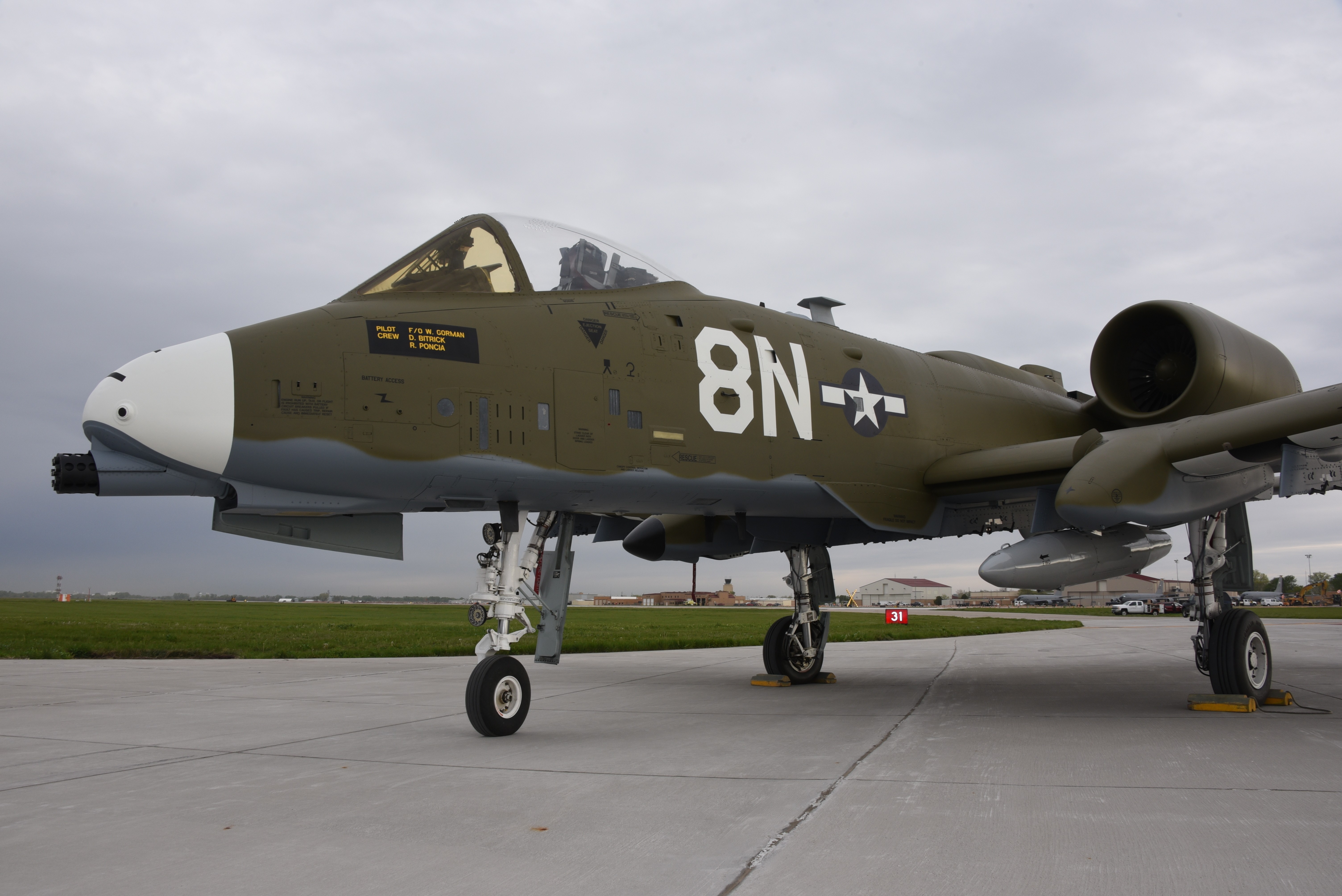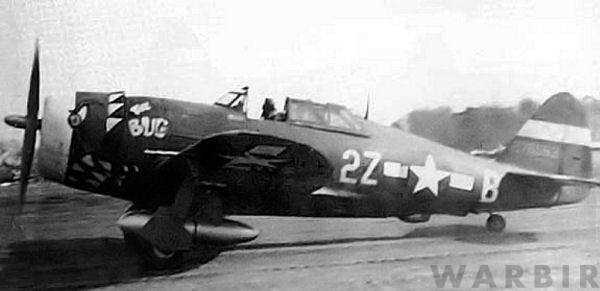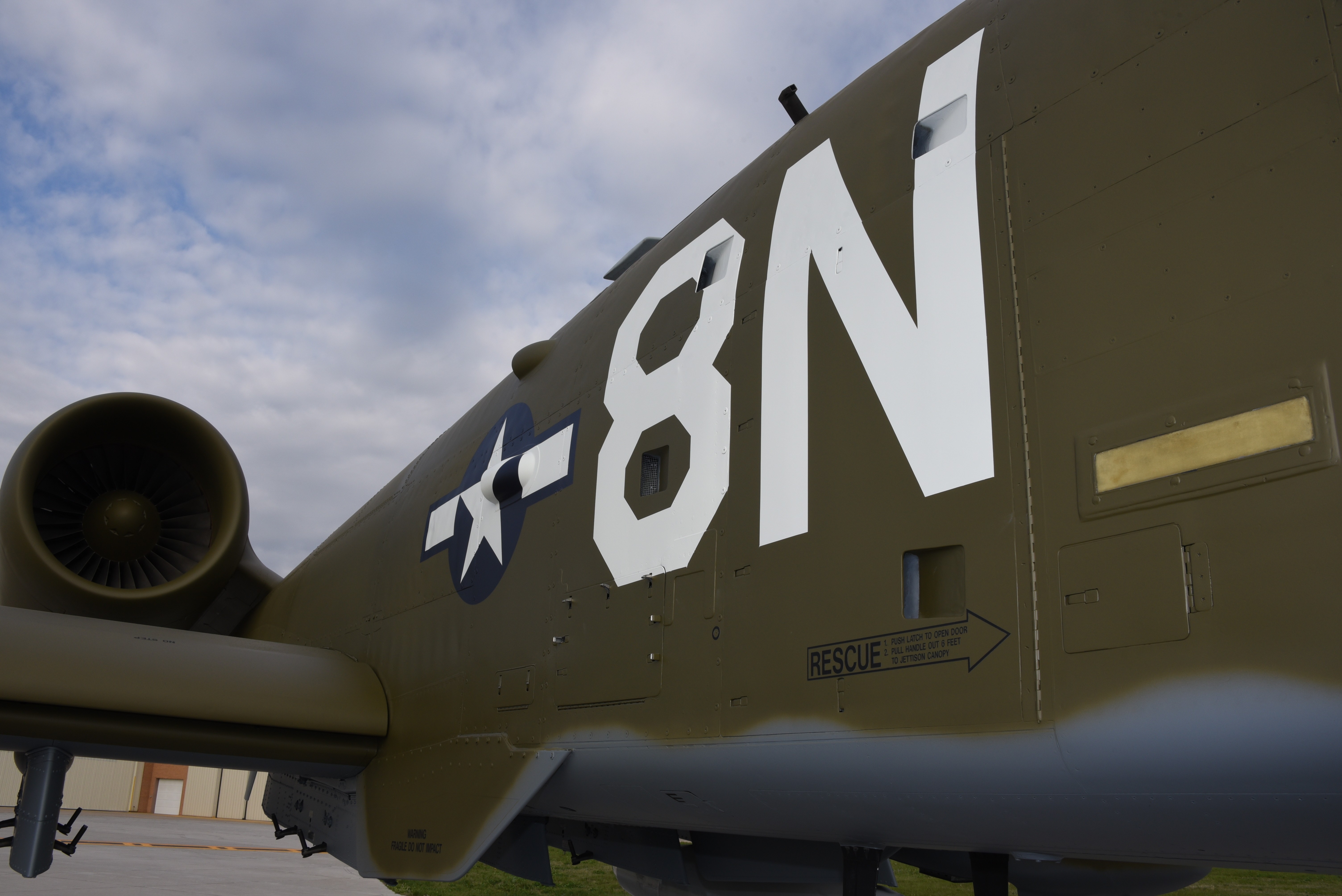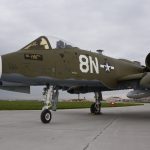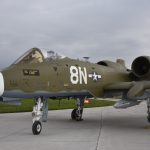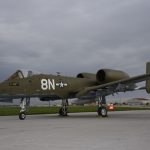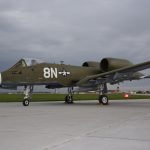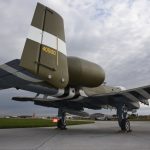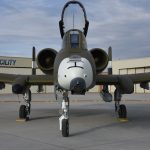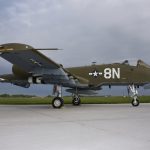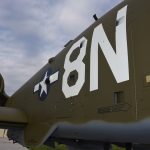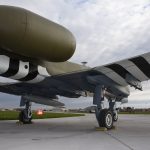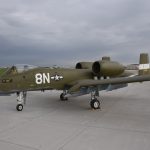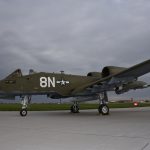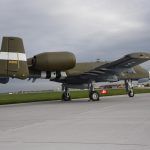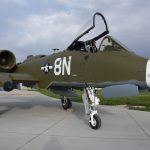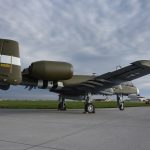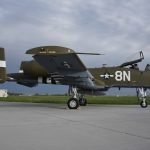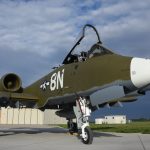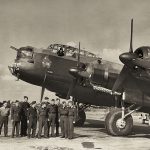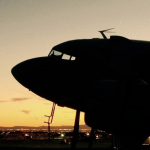by Air Force Senior Master Sgt. Vincent De Groot, 185th Air Refueling Wing
The National Guard paint facility in Sioux City, Iowa revealed a remarkable heritage paint scheme which they completed this week on an Idaho Air National Guard (ANG) A-10 Thunderbolt II. The 124th Fighter Wing of the Idaho ANG conceived this new livery for their A-10 in celebration of the unit’s 75th anniversary and their lineage to the WWII-era 405th Fighter Group, which flew Republic P-47 Thunderbolts.
The 405th Fighter Group was a United States Army Air Forces fighter-bomber unit during World War II. They flew P-47 Thunderbolts in the European Theater of Operations (ETO), starting with the buildup to the Invasion of Normandy (“D-Day”) and continuing through to the end of the war in Europe. The 405th was a unit within the Ninth Air Force, IX Fighter Command, IX Tactical Air Command, 84th Fighter Wing. They operated some 73 aircraft, spread between the 509th, 510th, and 511th Fighter Squadrons, plus headquarters elements, and primarily carried out support missions for Patton’s Third Army.
The 405th Bombardment Group (Dive) first organized on February 4th, 1943 at Drew Field near Tampa, Florida, and activated on March 1st, 1943. The group was initially equipped with a few Douglas A-24 Banshee and Curtiss A-25 Shrike dive-bombers, although they gained some P-39 Airacobras before they leaving Drew. The 405th BG became redesignated as the 405th Fighter Bomber Group on August 15th, 1943, moving to Walterboro, South Carolina that September. In Walterboro, the group received their first P-47 Thunderbolts, these being the earlier ‘razorback’ variants. In February 1944, the group moved by train to a point of embarkation (POE) camp near New York City, and soon embarked aboard the RMS Mauritania for transport to England. After six days at sea, two of them in hurricane conditions, the group finally arrived in Liverpool, traveling from there by train to Southampton, then via lorry to Christchurch, Dorset.
From March to 29 June 1944, the 405th operated out of the RAF Christchurch. After setting up camp and training over England, the group began combat operations over France. During this period their primary task was ground attack ahead of the coming Operation Overlord invasion of Normandy. The group disrupted German positions and transportation infrastructure. Train locomotives were a favorite target. The group destroyed the Seine River bridge at Mantes-Gassicourt, northeast of Paris, just before the invasion, to inhibit movement of German materiel. The group was grounded during the June 6th invasion activities because Allied command was concerned that inexperienced anti-aircraft batteries would mistake P-47s for the German FW-190. The 405th resumed flying on 10 June, providing close air support to the beachhead. On June 18th, 1944, the group was redesignated to the 405th Fighter Group. A few weeks after the invasion, the 405th packed up and moved to a POE near Southampton.
While encamped at Christchurch, the Group’s officers bivouacked in Bure Homage, an English manor house, adjacent to the airfield, which the British Ministry of Defence had requisitioned for military use during the war.
The group’s most notable action was the destruction of an entire German armored division near the town of Avaranches [sic], France on July 29th, 1944. After immobilizing leading and trailing elements of the 3 mile long column, the rest of the tanks and trucks were trapped, and systematically destroyed during multiple sorties.
The 405th also accepted the surrender of the highly decorated Luftwaffe Stuka-ace, Hans-Ulrich Rudel, and his officers at the end of the war. (405th historic information provided by www.americanairmuseum.com)
The WWII-themed livery for the newly-painted A-10 Thunderbolt gets down to the details with a white nose, period U.S. Air Force roundels on the fuselage and wing, along with D-Day Invasion stripes all painted over an olive drab base coat. The “8N” painted on the side of the aircraft indicates the aircraft code for the 405th Fighter Squadron.
It is not just the unit, but the aircraft which share a common linage; the original P-47 Thunderbolt was manufactured by Republic Aviation during World War II as a multi-role air-to-air and ground attack aircraft. After the war, the P-47 remained in service in the U.S. Air National Guard through the early 1950’s where it was used as a cost-effective way to train new aircrew. During the war, Britain’s Royal Air Force adapted their P-47Ds to become primarily ground attack aircraft, similar to the mission of the A-10 today.
The P-47’s younger sibling, the A-10 Thunderbolt II, was manufactured by Fairchild Republic, and designed specifically for close air support. With its heavy 30mm rotary cannon, it is commonly known as the tank killer.
The 340th heritage paint scheme on this A-10 is one of several similar heritage schemes which the ANG paint facility has created in the past several years. Units of the Air Force and Air National Guard can get permission to temporarily paint non-standard markings on aircraft as part of unit heritage and moral. The aircraft will likely appear at air shows this year to show, reminding audiences of the unit’s WWII heritage.







